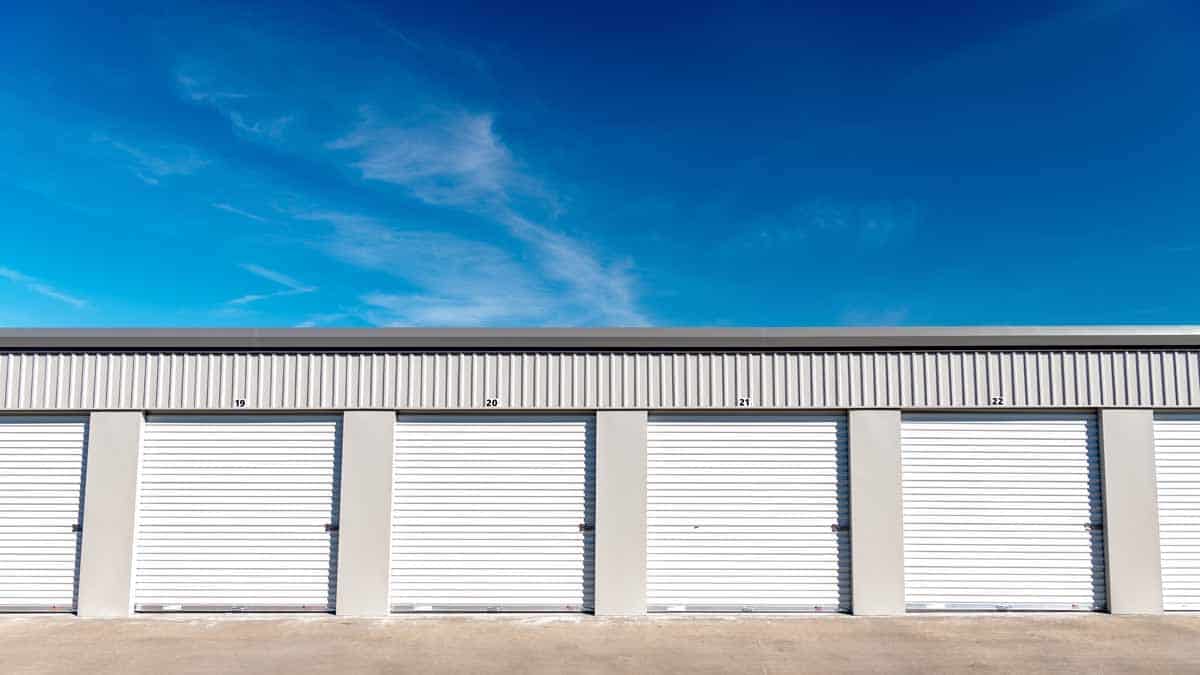Topics Covered:
If you rely on loading docks for daily shipping and receiving operations, then you know that even the smallest hiccup in the process can create significant bottlenecks. A key element of any loading dock area is the loading dock door. Properly choosing, installing, and maintaining this door can dramatically improve efficiency, keep your employees safe, and even lower long-term operational costs.
Assessing Your Operational Needs
Before you even think about door types or materials, take a good look at your everyday logistics. Are you receiving large shipments multiple times a day? Do you work with temperature-sensitive goods that require climate control? Do your loading docks handle different vehicle sizes, from small vans to large tractor-trailers?
Here in Raleigh, we see a wide range of businesses—from food distributors to manufacturing plants—each with unique dock door requirements. Knowing precisely how your loading dock operates (and what it needs to do better) sets the stage for a successful installation. Ask yourself:
- Frequency of Use: If you’re cycling trucks in and out non-stop, you’ll want a door that can keep up—perhaps a high-speed roll-up door built for rapid open and close cycles.
- Climate Requirements: Storing or handling perishable goods? An insulated door might be essential for maintaining a stable temperature, saving on energy costs, and preserving product quality.
- Security Demands: Does your facility hold high-value inventory? Certain doors come with reinforced panels and advanced locking mechanisms for added protection.
The clearer you are about your specific use cases, the simpler it will be to select the right door and features. It also helps your installer (that’s us!) to customize recommendations that truly fit your operational flow.
Choosing the Right Door Type
Loading dock doors come in various styles, each with its own advantages. Here’s a quick rundown of the most common types we install here at RJ Garage Door Services:
- Sectional Overhead Doors: Made up of horizontal panels that slide up and overhead along a track. These doors are versatile, offer good insulation, and are relatively easy to service.
- Roll-Up Steel Doors: A space-saving option, these doors roll into a coil at the top, making them great for facilities with limited ceiling room. They’re typically very durable and can provide excellent security.
- High-Speed Fabric Doors: Designed for rapid cycles, these doors open and close quickly to minimize air exchange—perfect for temperature-sensitive or clean-room applications.
- Fire-Rated Doors: In some industries, local codes or insurance requirements mandate fire-rated doors capable of slowing or containing a fire event.
Your choice will depend on factors like the volume of traffic, the need for insulation, and your budget. If you’re unsure, ask for a thorough consultation; it’s always better to invest in the right door the first time rather than regret a rushed decision later.
Safety First: Essential Features and Compliance
When it comes to loading dock operations, employee safety is paramount. The U.S. Occupational Safety and Health Administration (OSHA) mandates certain protocols to protect workers around heavy machinery and rolling doors. Here are some critical safety features to consider:
- Photo-Eye Sensors and Auto-Reverse: Much like residential garage doors, commercial doors should detect any person or object in their path and reverse automatically.
- Safety Edges: Some doors come with pressure-sensitive edges that stop the door if it encounters resistance, providing an additional layer of protection against entrapment.
- Manual Release: In the event of a power outage or mechanical malfunction, a manual release lets you open or close the door to secure the building or maintain operations.
- Proper Dock Barriers: Beyond the door itself, consider adding dock bumpers, railing, or visual cues so forklift operators and truck drivers clearly see boundaries.
Failing to include these features—or installing them incorrectly—can expose your business to serious liabilities. In addition to potential injuries, violations of OSHA guidelines can lead to hefty fines and legal complications. A reputable installer will help you navigate these safety requirements and ensure full compliance.
The Importance of Professional Measurements and Site Surveys
You’d be surprised how often we arrive at a site only to find the space measured incorrectly or overlooked structural issues. When it comes to loading dock door installations, exact measurements are non-negotiable. Even a slight discrepancy can lead to:
- Misaligned Tracks: A door that doesn’t move smoothly up and down, causing premature wear or frequent jams.
- Poor Sealing: Gaps around the frame let in water, dust, and pests—bad news for your products and utility bills.
- Structural Compromises: Additional stress on your building’s framework if the door and hardware aren’t secured to the proper supports.
A thorough site survey goes beyond simple length-and-width measurements. Professionals also check:
- Dock Height: Ensuring the chosen door aligns with ramps or dock levelers.
- Headroom and Side Room: The space above and to the sides of the opening, crucial for track placement and motor housing.
- Wall Composition: Different materials (brick, metal, concrete) require varying installation techniques and fasteners.
Getting these details right upfront sets the tone for a smooth, efficient installation process that won’t require costly rework.
Don’t Overlook Insulation and Weather Sealing
Raleigh’s climate can see sweltering summers and chilly winters, which makes insulation a priority for many warehouses and distribution centers. While you might think of insulation primarily for temperature control, it also:
- Reduces Noise: If your facility is near a residential area or if you want a quieter work environment, insulated doors can help dampen outside sounds.
- Prevents Condensation: Moisture buildup inside a dock area can lead to slippery floors and mold—both significant hazards.
- Saves Energy: A well-insulated door keeps heated or cooled air inside, lowering HVAC costs. The U.S. Department of Energy indicates that simple upgrades, like adding weather stripping or insulated doors, can cut energy use by 5–20%.
Additionally, weather sealing around the door edges and threshold helps block drafts, pests, and contaminants. This is especially crucial if you’re dealing with food, pharmaceuticals, or any product sensitive to environmental changes.
Installation Best Practices for Efficiency and Longevity
Once you’ve selected the right door, it’s time to ensure the installation is done correctly. Here’s what a high-quality installation typically involves:
- Preparation and Demolition: Removing any old door or frame, and clearing the workspace for a safe and unobstructed installation area.
- Frame and Hardware Setup: Anchoring the door’s frame, track, and hardware into the building’s structure with the correct fasteners for the wall type.
- Spring and Counterbalance Alignment: Torsion or extension springs need precise tension to let the door move smoothly without straining the motor or door panels.
- Motor Installation and Wiring: If your door is motorized, safe and correct wiring is essential. This includes installing control panels at easily accessible points.
- Safety and Function Checks: Once everything is in place, the installer tests sensors, auto-reverse mechanisms, and ensures the door runs seamlessly.
A professional installer will not just bolt everything together—they’ll also fine-tune the system. This attention to detail is what separates a door that merely works from one that provides optimal performance for years to come.
Ongoing Maintenance and Service Plans
A loading dock door is much like any piece of machinery: it needs routine care to stay in top shape. Here at RJ Garage Door Services, we often recommend periodic maintenance plans, especially for facilities that use dock doors multiple times a day. Routine checkups generally include:
- Lubricating Rollers and Hinges: Prevents squeaking, grinding, and wear on metal parts.
- Testing Safety Systems: Ensures sensors and auto-reverse still work correctly, reducing the risk of accidents.
- Inspecting Cables and Springs: Identifies fraying or damage early before they snap and cause downtime.
- Checking Seals and Insulation: Replacing worn weather stripping to maintain energy efficiency and protect the dock area from moisture.
According to Facility Management Magazine, businesses that implement preventive maintenance can reduce unexpected repair costs by up to 30–40%. That’s money you can put back into expanding your operations or enhancing your workspace.
Training Staff for Safe Operation
Even the best loading dock door won’t offer the full benefit if employees aren’t trained on how to use it safely and efficiently. Consider creating a short training program for anyone operating the door or working near it. Topics might include:
- Basic Door Operation: Understanding how to open and close the door manually (if needed) and how to handle the controls.
- Safety Protocols: Emphasizing the importance of waiting until the door is fully open before driving a forklift through, or verifying the area is clear before closing.
- Reporting Issues Promptly: Encouraging staff to notify management or maintenance if they notice unusual sounds, slow operation, or damage to the door or tracks.
- Locking and Security Procedures: If the door has advanced locking features or keypads, staff should know when and how to secure the dock area.
A well-informed team not only reduces the risk of accidents but also lengthens the life of your door by preventing improper usage and damage.
The ROI of a Well-Installed Loading Dock Door
You might wonder if the time and money spent on professional loading dock door installation is truly worth it. From our experience serving Raleigh businesses, the return on investment often manifests in several ways:
- Reduced Downtime: Fewer breakdowns mean your deliveries stay on schedule, and customers remain satisfied.
- Lower Repair and Energy Costs: Quality insulation and proper maintenance keep utility bills manageable and emergency repairs minimal.
- Enhanced Safety Record: Keeping employees safe reduces liability, workers’ comp claims, and staff turnover.
- Improved Reputation: Reliable dock operations can boost your standing with carriers and clients who appreciate a smoothly run supply chain.
The International Warehouse Logistics Association notes that well-maintained doors can last up to 20 years or more. So, while the upfront investment might feel significant, you’re really investing in decades of streamlined operations, fewer hassles, and greater peace of mind.
Partnering with a Trusted Local Installer
Ultimately, a safe and efficient loading dock door installation hinges on the expertise of your installation team. That’s where we come in. At RJ Garage Door Services, we’ve built our reputation on:
- Personalized Consultations: We don’t believe in a one-size-fits-all approach. We tailor our recommendations to your warehouse size, logistics flow, and budget.
- Skilled Technicians: Our technicians are trained and certified, understanding both the mechanical and safety aspects of industrial door installations.
- Transparent Pricing: No hidden costs. We’ll break down the price of each component and service so you know exactly what you’re getting.
- Long-Term Support: Beyond the initial installation, we offer maintenance plans and are on call for any urgent repairs. Your loading dock door is a long-term asset, and we’re here to help you protect it.
Because we’re based in Raleigh, we also understand local weather patterns, building codes, and the unique challenges businesses face in our region—like humidity, storms, and temperature swings. That local insight can make all the difference when customizing a door system that truly stands the test of time.
Making the Final Decision
Choosing and installing a loading dock door can feel like a daunting task, but it doesn’t have to be. With the right considerations—proper sizing, safety features, insulation, and professional help—you can set your business up for smoother operations, fewer accidents, and significant cost savings.
If you’re still on the fence or have specific questions about types of doors, insulation options, or code requirements, don’t hesitate to reach out. The RJ Garage Door Services team is just a call or message away. We’d love to discuss your business’s unique needs and show you how a well-chosen, expertly installed loading dock door can transform your daily workflow.




